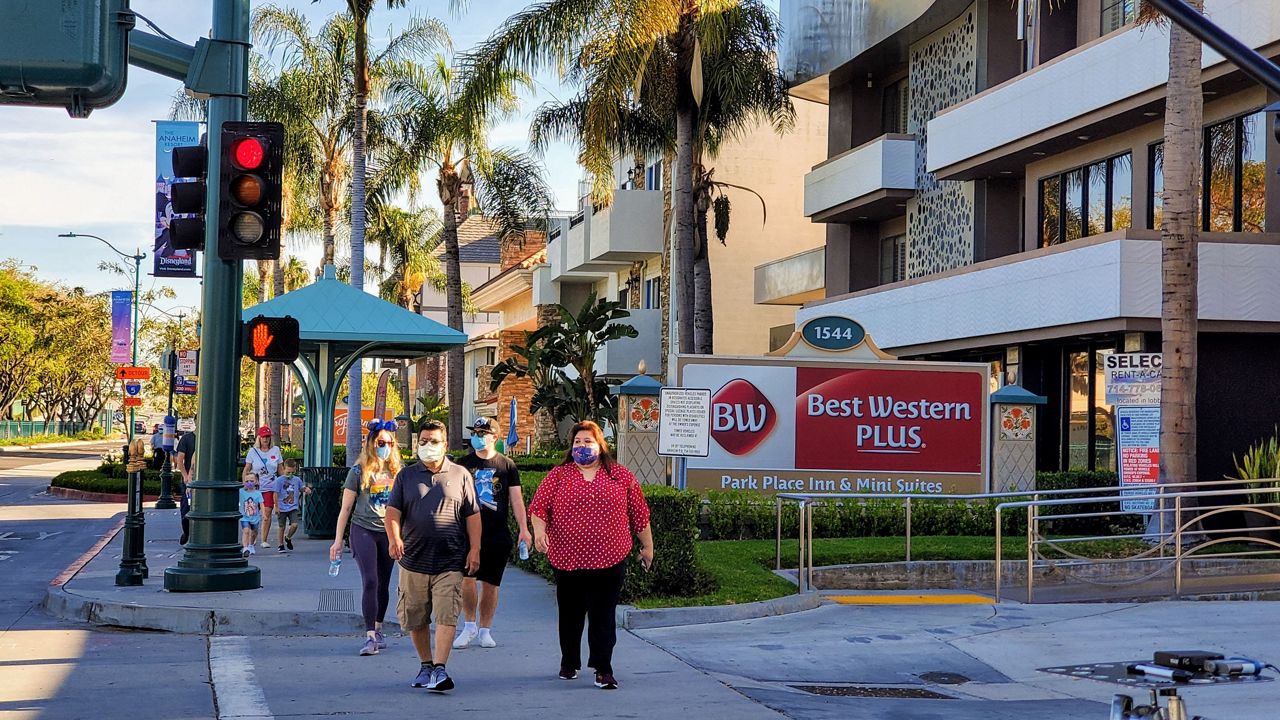ANAHEIM, Calif. — After the coronavirus pandemic crippled the hospitality industry, high pent-up demand and fewer overseas travel are driving hotel demand in Orange County.
Hotels, especially Anaheim, are reaching 2019 occupancy levels and charging and earning more these days from pre-pandemic times.
According to STR, the four-week average occupancy rate for hotels in Orange County is 77% ending Oct. 1. In 2019, the pre-pandemic occupancy rate was at 80%.
This year, the average daily hotel rate is about $207, and the revenue per room (RevPAR) - the amount of revenue generated for a room - is $160. In 2019, ADR was $161 and RevPAR $129, STR data shows.
"[Hotels] are faring very well, and Anaheim is leading the state," said Alan Reay, president and CEO of Atlas Hospitality, to Spectrum News.
Reay said Anaheim had bounced back from the pandemic lows when occupancy rate, ADR, and RevPAR were significantly down.
In August 2022, ADR was $209 and RevPAR $150, a significant increase from the previous year.
Last year, the average daily rate for a hotel room in Anaheim was $151, and hoteliers were generating about $72 per room, said Reay.
"Anaheim is benefiting from the post COVID pent-up demand," said Reay. "Fewer U.S. travelers are opting for an overseas trip, which makes Anaheim/Disney[land] a very strong and desirable market. It also benefits from the huge pick up in 'drive-to' business."
The hospitality industry has been among the most negatively impacted industries since the pandemic started in March 2020.
In California, stay-at-home government orders, the prolonged closures of theme parks and several tourist destinations, restrictions on travel, and other limits took an incredible toll on the industry that still sees its ramifications today.
The recent data shows that things are returning to normal, but it's not fully there yet, said Reay.
"The tourism business is back to normal, but the meeting and conventions business is still well below 2019 levels, so that has some way to go to fully recover," said Reay.
Reay added that the labor shortage and increased operating costs are some major concerns for hotel owners moving forward.
According to an American Hotel & Lodging Association survey of 200 hoteliers, nearly every hotel is experiencing staffing shortages.
The survey released earlier this month found that 87% of respondents indicated they were experiencing a staffing shortage, and 36% reported a severe shortage. Nearly half said finding housekeeping staff was their biggest challenge.
Hoteliers have bumped up incentives and pay, but hiring continues to lag.
Reay said along with employment and higher cost, the sharp rise in interest rates is also hurting hoteliers "that have to refinance or looking to sell today."
Still, with the pandemic waning, things continue to look up for the hotel industry, said Reay.
